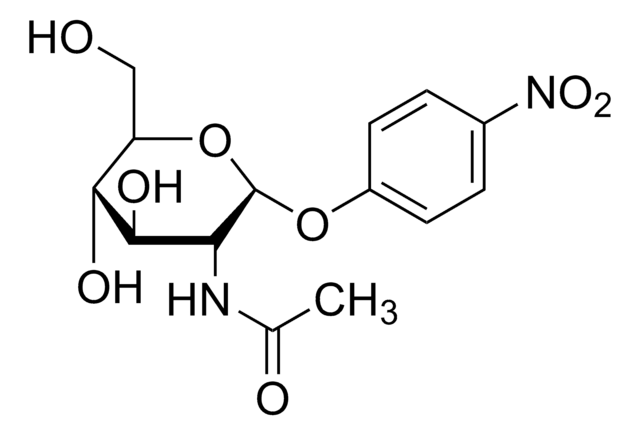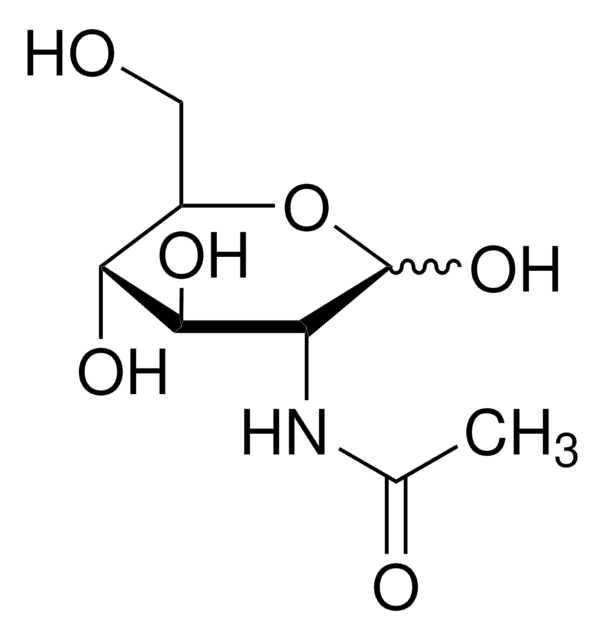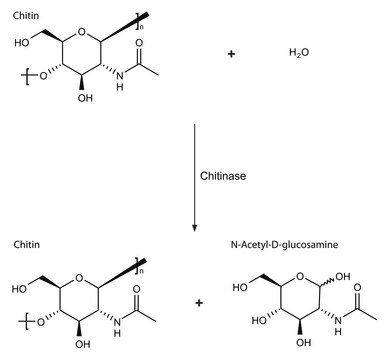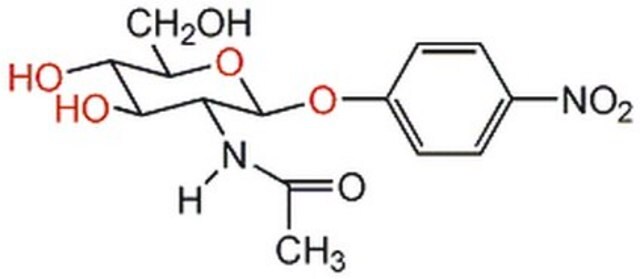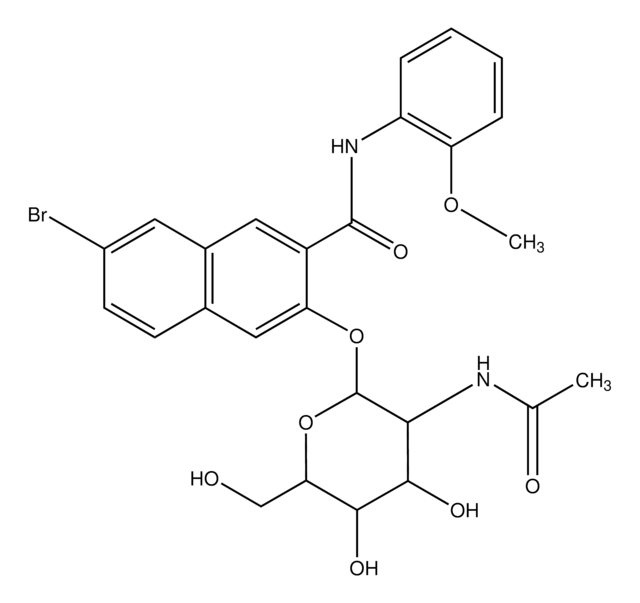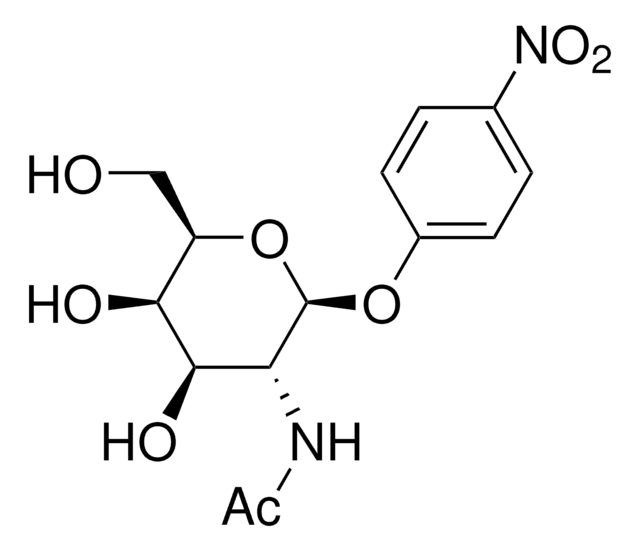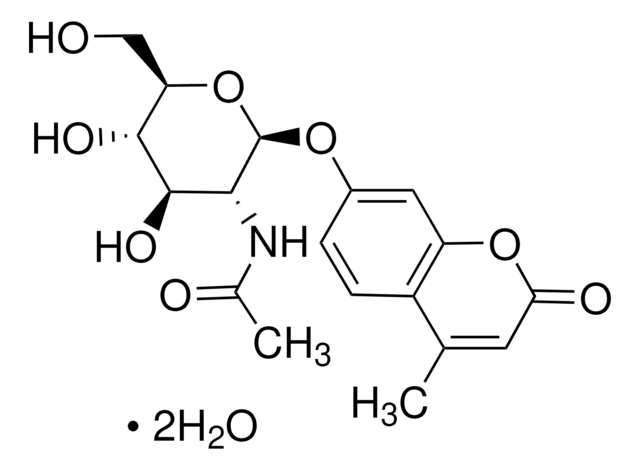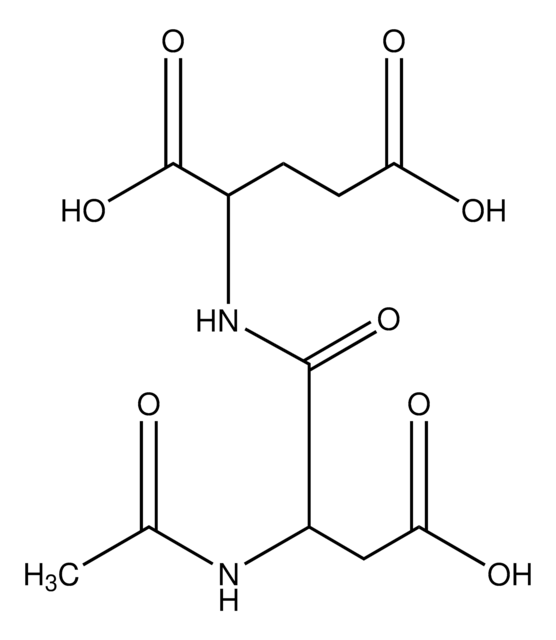10875406001
Roche
N-acetylo-β-D-glukozaminidaza(NAG)
sufficient for ~50 tests
Synonim(y):
NAG
About This Item
Polecane produkty
Formularz
solid
Poziom jakości
zastosowanie
sufficient for ~50 tests
masa cząsteczkowa
105.99 g/mol
producent / nazwa handlowa
Roche
metody
activity assay: suitable
kolor
white to light yellow-brown
rozpuszczalność
water: soluble ~210 g/L at 68 °F (Stop reagent)
soluble ~71 g/L at 32 °F (stop reagent)
water: soluble (Buffer substance, lyophilized substrate)
przydatność
suitable for enzyme test
Zastosowanie
life science and biopharma
temp. przechowywania
room temp
Opis ogólny
Zastosowanie
Opakowanie
Uwaga dotycząca przygotowania
- Buffer solution
Dissolve the contents of bottle 1 with 55 ml double-distilledwater. - Substrate solution
Dissolve the contents of bottle 2 with 55 ml solution I. - Stop reagent
Dissolve the contents of bottle 3 with 110 ml double-distilled water.
Storage conditions (working solution): Stability of solutions:
Solution II is stable for 1 month when stored at 2 to 8 °C, protected from light.
Solution III is stable for 1 month stored at 2 to 8 °C.
Stability of the sample:
The activity determination of the N-acetyl-β-D-glucosaminidase (NAG) should be carried out directly after collecting the sample. Turbid urines should be centrifuged and the supernatant decanted. NAG is stable for one week at 2 to 8 °C and for one month when stored at -15 to -25 °C.
Przechowywanie i stabilność
Inne uwagi
Tylko elementy zestawu
- Buffer Substance consisting of citric acid and potassium citrate
- Lyophilized Substrate consisting of sodium 3-cresolsulfonphthaleinyl-N-acetyl-β-D-glucosaminide and borax
- Stop Reagent consisting of sodium carbonate
Hasło ostrzegawcze
Danger
Zwroty wskazujące rodzaj zagrożenia
Zwroty wskazujące środki ostrożności
Klasyfikacja zagrożeń
Eye Irrit. 2 - Repr. 1B - STOT SE 3
Organy docelowe
Respiratory system
Kod klasy składowania
6.1C - Combustible acute toxic Cat.3 / toxic compounds or compounds which causing chronic effects
Klasa zagrożenia wodnego (WGK)
WGK 2
Temperatura zapłonu (°F)
does not flash
Temperatura zapłonu (°C)
does not flash
Wybierz jedną z najnowszych wersji:
Masz już ten produkt?
Dokumenty związane z niedawno zakupionymi produktami zostały zamieszczone w Bibliotece dokumentów.
Klienci oglądali również te produkty
Nasz zespół naukowców ma doświadczenie we wszystkich obszarach badań, w tym w naukach przyrodniczych, materiałoznawstwie, syntezie chemicznej, chromatografii, analityce i wielu innych dziedzinach.
Skontaktuj się z zespołem ds. pomocy technicznej



